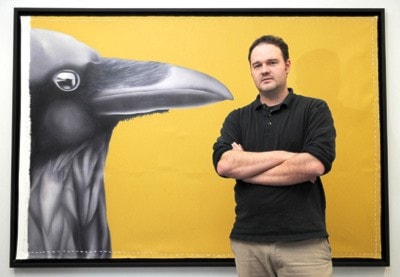Abbotsford’s first public art piece has received mixed reaction. While some like the work, the $64,000 price tag has others opposed.However, members of Abbotsford’s arts community see it as a long-term investment, rather than a short-term cost.“It says you are here,” said Lee Murray, owner of House of Fine Art and lifelong arts activist. “It stands out. Interchanges are uneventful and boring.”The piece, created by local First Nations artist Raphael Silver, is a sculpture representing the life of salmon and is located in the middle of the southern roundabout on the new McCallum Road interchange. “It’s a piece that will be seen in every tourist guide out there,” said Murray, adding public art is a good way to promote a community.“Public art tidies everything up, it puts life into the street ... It makes the town attractive and somewhere you want to live.”He believes much of the discontent is caused by perception. The public sees the price tag instead of the art work.“If we called it a fee instead of a tax, people would be much happier.”Chris Friesen, an instructor at the University of the Fraser Valley’s visual arts department, and president of the Abbotsford Arts Council, believes the city received a “tremendous deal” on the sculpture, and the public should be thrilled. He pointed to Seattle and other U.S. cities that rally around the idea of public art.“We need to make it (public art) part of our culture ... We are the fifth largest city in B.C. but one of the last to create a public art policy. “We are so far behind culturally,” said Friesen.Last month, council approved the policy, which provides a contribution of one per cent of the cost of public capital projects, toward public art, up to a maximum of $300,000. Critics have questioned the timing, considering the recent 4.3 per cent municipal tax increase, civic service cuts, and millions of dollars needed for infrastructure projects including a new water system.“When you pay for public art, at least you get something for the money you spend,” said Friesen.It’s not conceptual like money spent on consulting fees each year, Friesen said, maintaining the public will eventually come to peace with an initiative that is intended to beautify the community.“The arts have been off the radar for so long. Now that it’s back on the radar, there are some growing pains,” said Friesen.The full effect of public art won’t be felt for several years.“It’s one piece. You need several pieces to tell a story ... I want to see more public art, not less,” said Friesen.Three more public art pieces are being planned, at the Clearbook interchange, the new west Abbotsford fire hall and the public library at Abbotsford Collegiate school.“Money invested into public parks seems to be more accepted than money into culture – but both are equally important,” said Suzanne Greening, executive director of the Reach Gallery Museum Abbotsford.She remembers an old saying about cities focusing on the three Ps – pipes, pavement and police – rather than culture.“It’s an education process. Investing in culture requires educating the politicians, city officials and the public.”Other B.C. cities have a strong public art presence, she said, citing Vancouver, Victoria and Richmond as examples of successful cultural initiatives that promote public art.“They all had to start somewhere. And that’s where we are now. We are just starting,” said Greening.In 2004, the city identified public art policies as a key component of a healthy city in its arts and heritage master plan.In 2006, the Arts and Heritage Advisory Committee was established to begin creating a public art program, and it studied the policies of other municipalities. In 2009, the Crime Reduction Task Force included public art as an important component of the City Beautification Strategy, referring to civic pride and community ownership. In 2010, the Parks, Recreation and Culture Commission approved recommendations in a public art policy report.
